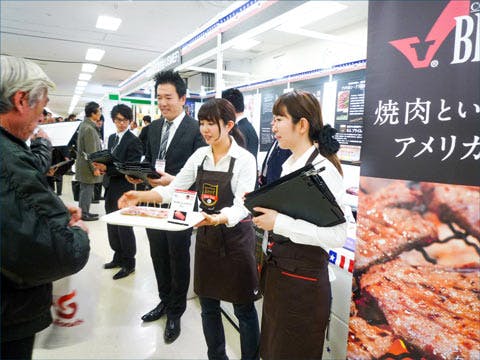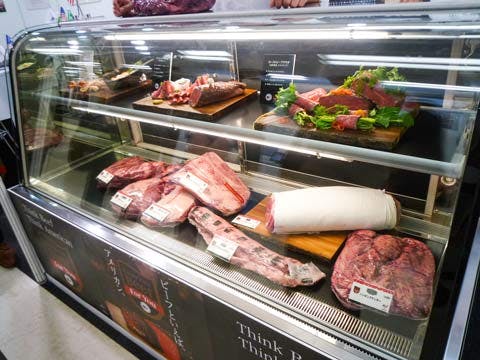U.S. Red Meat Offered as Quality Option for Japan’s Yakiniku Restaurants
USMEF participated in Tokyo’s Yakiniku Business Fair 2017, presenting U.S. beef – including USDA Prime cuts and branded Angus products – as alternatives to domestic Japanese beef while showcasing U.S. pork as an option for Japan’s many yakiniku restaurants. Funding for the trade show, which attracted 400 exhibitors and more than 20,000 visitors to the urban complex known as Sunshine City, was provided by the USDA Market Access Program (MAP), the Beef Checkoff Program and the Pork Checkoff.

USMEF offered visitors samples of U.S. beef and pork as menu options for Japan’s many yakiniku restaurants
Because prices for Japanese domestic beef are expected to remain high due to short supplies, USMEF strategy at the show was to promote U.S. beef’s quality and value, according to Takemichi Yamashoji, USMEF director in Japan.

U.S. Angus beef and USDA Prime beef were promoted as alternatives to Japanese domestic beef
“The important thing was to educate restaurant managers and meat buyers about the availability of U.S. beef, along with the product’s flavor and versatility,” said Yamashoji. “Along with highlighting popular brands, including Angus, as well as different USDA grade options like Prime cuts, we also shared information about lesser-known alternative cuts of U.S. beef.”
USMEF shared suggestions for side dishes at yakiniku restaurants using U.S. beef and pork – for example, U.S. beef tongue ham and U.S. pork tenderloin cutlet prepared “Milan style.” To help potential customers gain a better understanding of these menu options, USMEF handed out tasting samples of these and other dishes featuring U.S. beef and pork.
“We received a lot of positive feedback from the visitors who sampled our items and we were able to meet many in the restaurant industry who were interested in learning more about U.S. products,” said Yamashoji. “Our plan is to continue to work with the Japanese yakiniku sector to expand the use of U.S. red meat.”
